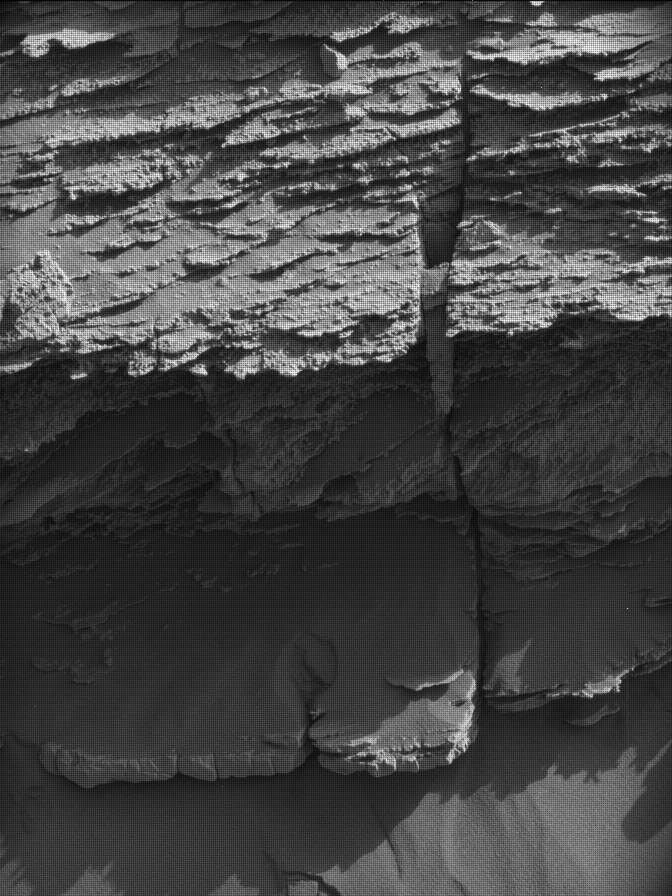Planning is no longer restricted, but we had to start at 6:00 PDT
this morning to give the operations team enough time to uplink commands by the time the rover expects them.
Driving to work before sunrise reminded me of the sometimes odd times we
had to wake up during the first 90 sols of the mission, when the entire
operations team was on "Mars time."
The team is very interested in the outcrop in front of the rover, so I
had a very busy day as MAHLI/MARDI uplink lead today, even though we are
planning just one sol. We planned in advance for MAHLI nighttime
imaging of CheMin's inlet and MAHLI's calibration
target (using white and UV LEDs), so those activities were ready to go
this morning. But we had to prioritize and plan the details of
observations of other contact science targets. Because the Sol 1089
MAHLI images and APXS placement were not perfectly centered
on the Buckskin dump pile ,
our top priority is to repeat those
observations with updated positioning. We planned MAHLI images of a
target dubbed "Devon," which will also be measured by APXS. Many of the
targets of interest are difficult to reach with the arm, so the rover
planners requested relatively low-resolution
MAHLI images of them to support planning of more contact science on Sol
1092. These targets were named "Pentagon," "Lebo," "Ivanhoe," and
"Ledger," with Ledger being imaged in stereo by Mastcam because it is a
candidate for brushing with the DRT. Finally,
the APXS will be placed on the dump pile for overnight integration.
We had to put more
thought than usual into prioritizing various data for downlink, as we
expect only 38 Mbits of data before Sol 1092 planning begins tomorrow morning. This situation forced us to compress some of the
MAHLI images more than usual, and to create new command sequences. But if all goes well, we will receive enough data tomorrow morning to plan contact science on multiple targets.
by Ken Herkenhoff
Dates of planned rover activities described in these reports are subject to change due to a variety of factors related to the Martian environment, communication relays and rover status.
Written by Ken Herkenhoff, Planetary Geologist at USGS Astrogeology Science Center



































